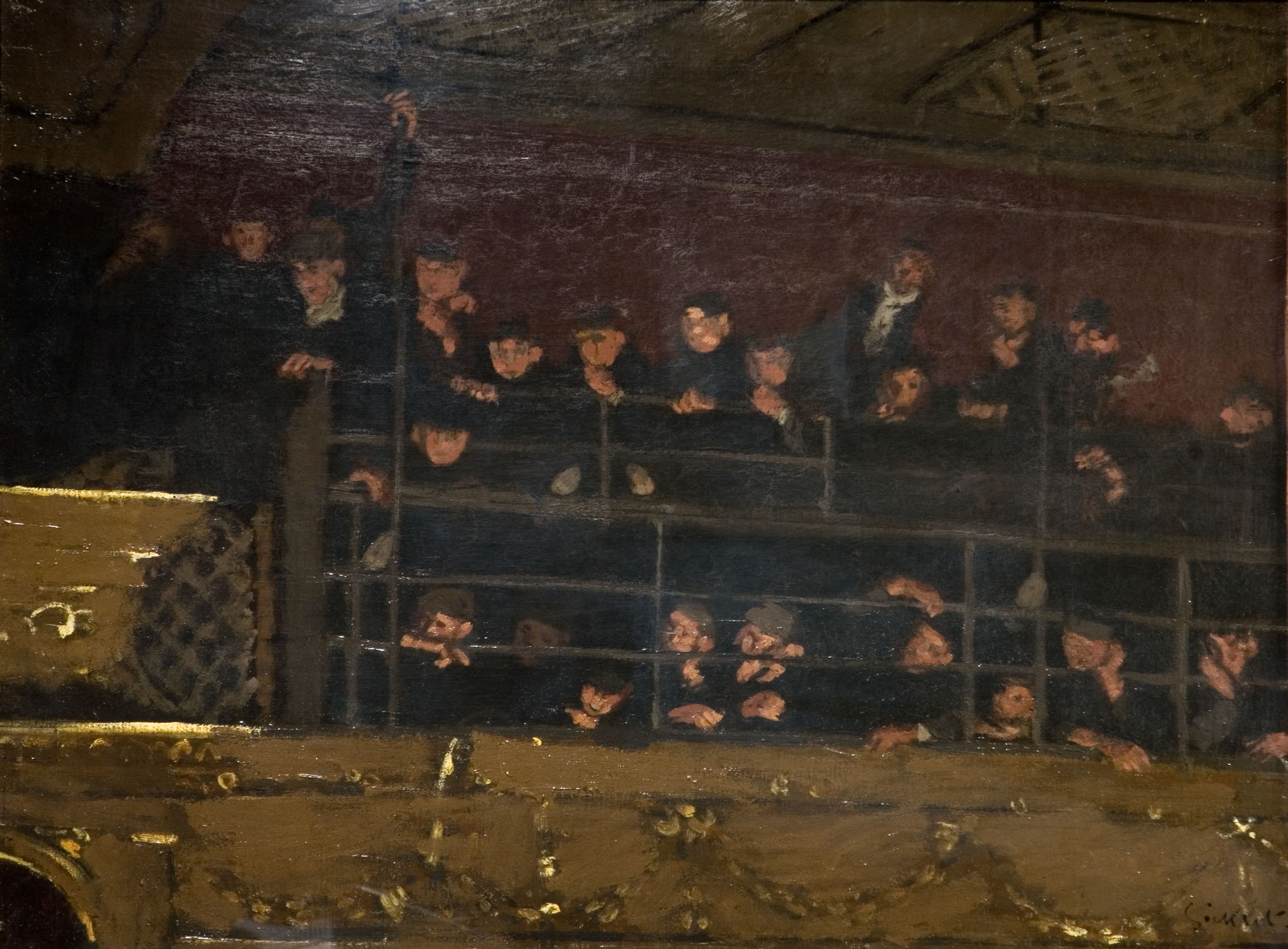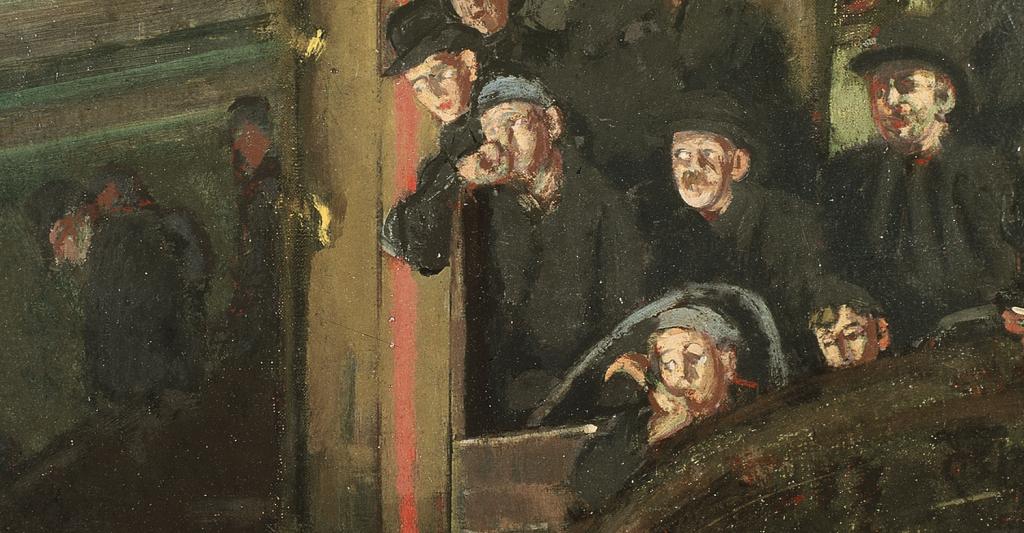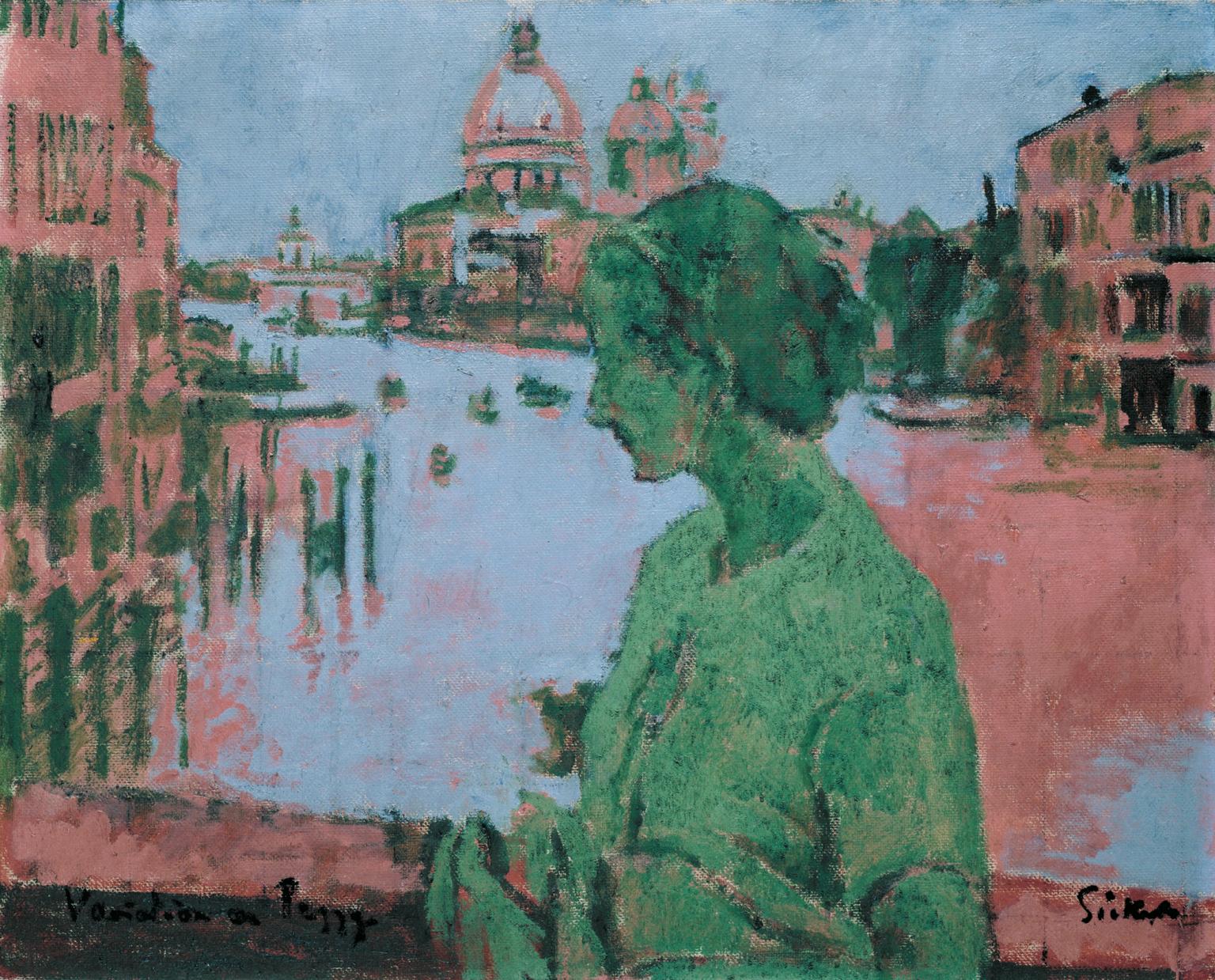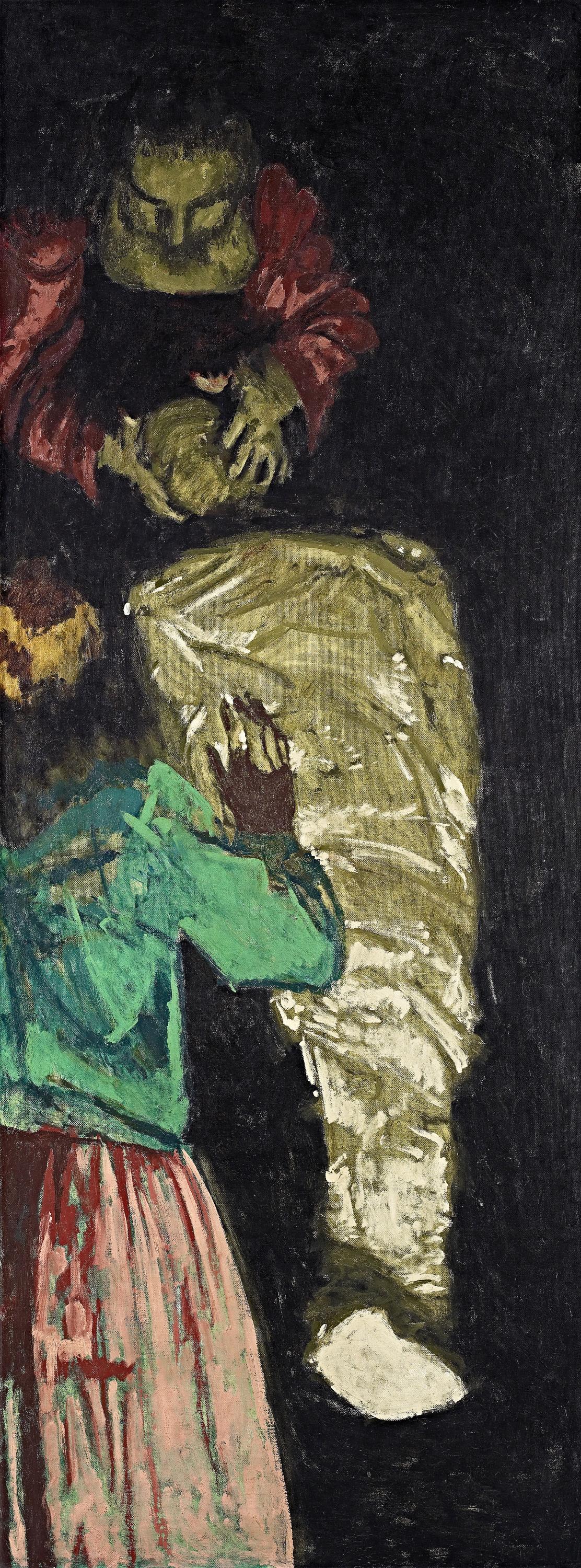
'Sickert recalled his youthful experience as an actor by acting in his own painting' – Sickert and His Theatre
Junxia Wang delves into the world of theatre to understand Sickert’s deep-rooted connection with the stage.

Before taking up a career as a painter, Walter Sickert took his first job as an actor between 1878 and 1882. His fascination with theatre, however, did not stop after that date, but continued throughout his career in both paintings and drawings.
From the late 1880s through the early 1900s, Sickert lingered around London music halls to discover subject matter for modern English painting. Like the mid-Victorian Punch illustrator Georgina Bowers (1836-1912), whom he admired, Sickert carried his scrapbook and sketched everything that captured his interest. His subjects were the audiences in the stalls or up in the gallery, performers on stage seen through the heads of stalls audiences, dramatic stage lighting, theatrical costumes and backdrops, and the carved pilasters and stained glass decorations in the theatre. He believed that drawing from life is the essence of art. Yet he was not satisfied with capturing the fleeting moment like the Impressionists; Sickert wanted more stable composition and colour. He experimented with sketches made in music halls later in his studio to produce elaborate compositions. By working from drawings made on the spot and choreographing the composition afterwards, he bestowed on his music hall paintings the vivid documentary value of London's entertainment venues from the eye of a keen observer, as well as more theatricality and visual interest than plain journalistic images.

Noctes Ambrosionae , Gallery Of The Old Mogul, 1906-07, Walter Richard Sickert, Photo by Birmingham Museums Trust, licensed under CC0
Sickert’s preference for working from drawings paves the way for his use of found images as the basis of paintings in his later career. From 1927 onwards, Sickert mainly painted from found images such as old prints, news photos and snapshots, rather than from his own drawings made on the spot. Using such images enabled Sickert to explore theatrical subject-matter drawn from different times and media: from Shakespearean plays in the Victorian age, to contemporary popular dramas and modern films. His ‘Echoes’, the series of paintings made from mid-Victorian illustrations, are such nostalgic works, bringing forgotten theatrical scenes of the last century to the 1930s. Sickert discovered famous theatres such as the Standard Theatre, Shoreditch, and Her Majesty’s Theatre, which enjoyed their heyday in the Victorian era. In contrast to the low tone and saturated colour in Sickert’s earlier music hall paintings, some of these paintings based on old prints, for example The Standard Theatre, Shoreditch 1844 (about 1936), have a brighter but faded palette, with bare canvas and squaring-up grids showing through, and they are executed in thin and loose touches that resemble the worn-out pages of old journals. Such language reminds the viewer that theatres in the 1930s were comparatively obsolete when new media such as radio and film became popular. The Standard Theatre was in fact turned into a cinema in the 1920s.
Painting from engraving and photographs inspired Sickert to experiment more freely with visual language and to indulge his concern with the quality of paint. He innovatively merged the modern subject of theatre and the modern media of print and photography, by observing the process of print-making and transmitting the language of print into painting.

Variation on Peggy, Walter Sickert, 1934-35, © Walter Sickert, Photo © Tate, CC-BY-NC-ND 3.0 (Unported)
By using lavishly saturated red and green in defined shapes, some of these theatrical paintings, such as Romeo and Juliet [after Adelaide Claxon] (about 1934), appear as decorative images similar to posters and postcards. This suggests that Sickert was developing a visual language from mechanical print-making at the turn of the twentieth century, in which a four-colour scheme of blue, red, yellow and black was often adopted. To produce colour printing such as lithography in Sickert’s age required the artist repeatedly to press plates of different colours onto the same paper, one layer on top of the other, so as to achieve a wide array of colours. As a result, the final colour print sometimes reveals the sequence of added colours, owing to the dislocation of plates in each press. In his painting, Sickert suggested this process by using a colour scheme typical of print, and by using colours separately rather than mixing them together in a traditional oil technique. In Variation on Peggy (1934-35), for example, Sickert used only four colours – green for the actor Peggy Ashcroft, blue for water and sky, red for architecture and dark, greenish-brown for contours. He also let one colour show through the edge of the other. The whole image, though copied from a newspaper photograph, appears unrealistic and artificial. Sickert has observed the actual print process of mass reproduction and applied the language in subject matter featuring another aspect of popular culture – the theatre.
Gwen Ffrangcon-Davies (1891–1992), in 'The Lady with a Lamp', about 1932–34, Walter Sickert, © Pallant House Gallery
The theatricality of Sickert’s painting lies not only in his theatrical subject matter, but also in his attitude to manipulating images as props to create theatrical scenes in his pictorial theatre. Once he found a portrait snapshot of potential, Sickert altered the background of the photograph and designed different backdrops that best told the story of the sitter/character. In Gwen Ffrangcon-Davis as Elisabeth Herbert in ‘The Lady with a Lamp’ (about 1932-34), Sickert added a backdrop from the Crimean War, during which the play was set. He created such theatrical portraits not only for actors but also for public figures from political or literary circles, including portraits of Lord Beaverbrook and Hugh Walpole. This suggests that Sickert was implicitly arguing that public life had something to do with performance and showiness.

The Raising of Lazarus, Walter Sickert, (1928-1929), National Gallery of Victoria, Melbourne, Felton Bequest, 1947, This digital record has been made available on NGV Collection Online through the generous support of Digitisation Champion Ms Carol Grigor through Metal Manufactures Limited.
Besides using photographs of contemporary performers, Sickert recalled his youthful experience as an actor by acting in his own painting. The Raising of Lazarus (1929) is one of the scenes he designed. Sickert, playing the role of Christ, wrapped a dummy figurine, ‘George’, in a shroud, and raised it with the help of his friend Cicely Hey. He had this scene photographed and then turned the photo into a painting. Again, the painting is executed in dramatic chiaroscuro and contrast of green and red, which dramatises the theatricality of this moment.
By painting theatrical subjects, and acting out different roles, Sickert built his own theatre within the picture. The shift in his working sources from drawings to press images also reflects the technological progress that was changing the climate of modern art and visual culture. Sickert responded to such change by creating a unique style inspired by print materials. He merged the modern subject of theatre into the language of popular print culture, providing a creative reinterpretation of the visual culture in the early twentieth century.
